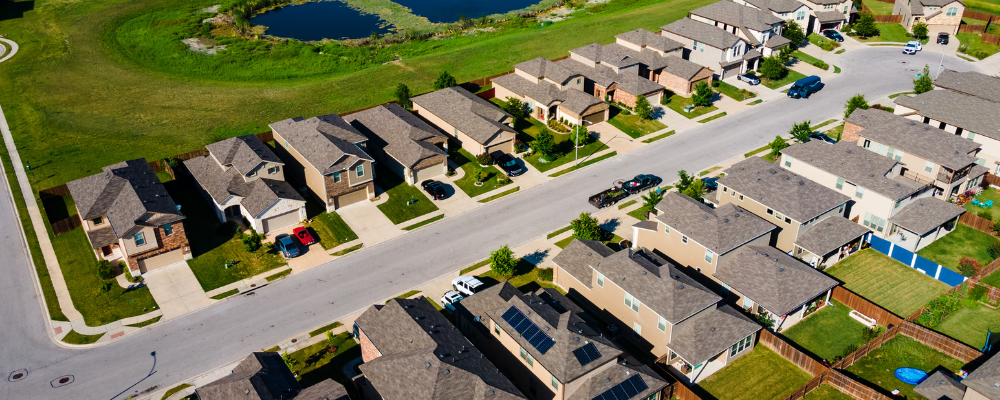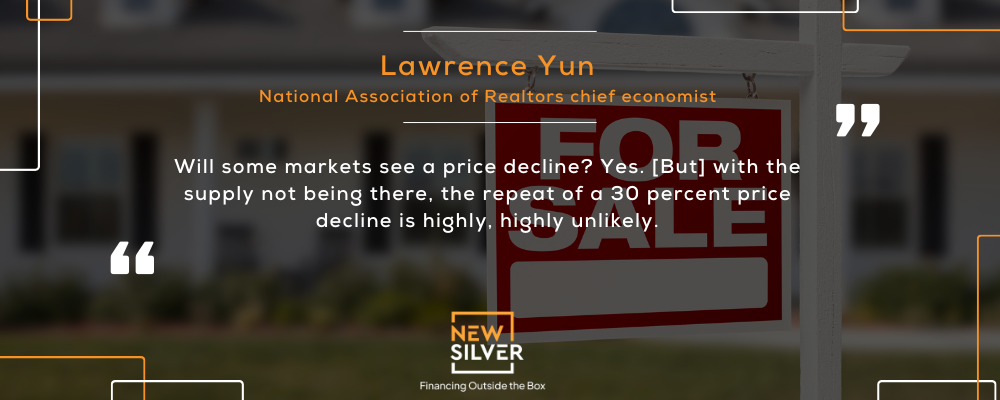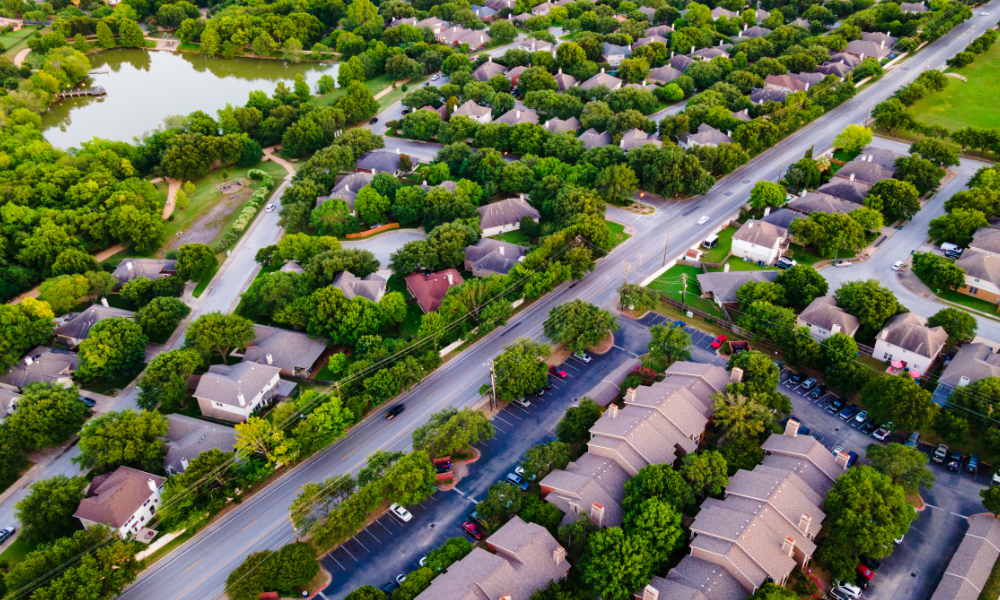The Short Answer
With interest rates and mortgage rates sitting at high levels over the last few years, the housing market in the US has seen home prices on the rise. In fact, in February home prices topped last year’s number by 5.7%, according to the NAR (National Association of Realtors).
Many buyers and investors are wondering if these prices will finally begin to fall in 2024, however the experts have mixed opinions on this. Ultimately, home prices vary widely according to each location. So, it’s likely that home prices will remain on the up in most areas, with certain metros seeing a decline.
Areas that are likely to experience a decline in median price are:
- San Jose, CA
- New Orleans, LA
- San Francisco, CA
- Minneapolis, MN
- New York City, NY
Key Points
Are Home Prices Falling Across The US?
Home prices have been on an upward trend for several years, icing many buyers out of the market and creating a market dynamic that has been holding strong. However, in 2024 this trend is slowing down, and shifting the market trends to make way for new investment, first-time home buyers and further real estate industry changes in a positive direction.
Zillow anticipates a decline in home prices across 34 out of the 50 largest cities in the United States between November 2023 and November 2024. This projection relies on Zillow’s Home Value Index, described by the company as reflecting the “average home value within a specific area.”
A recent report found that home prices experienced their first decline in 11 years in some areas. However, real estate market trends vary greatly according to state and city, so this isn’t necessarily a blanket trend that will occur across the board. Real estate mogul Barbara Corcoran, on the other hand, believes that,
The minute those interest rates come down, all hell’s going to break lose and the prices are going to go through the roof...
In fact, housing prices increased yet again in February 2024, according to the National Association of Realtors (NAR). The NAR found that the median existing home prices had continued to rise, topping last year’s number by 5.7%, in February. With an insufficient housing supply, experts like Rick Arvielo, head of mortgage firm New American Funding, are not expecting a decline overall in home prices in the US.

Home Appreciation Rate By State - Last 12 Months
| State | Average Home Value | 1 Year Appreciation Rate |
|---|---|---|
| Alabama | $221,490 | +2.0% |
| Alaska | $349,502 | +1.1% |
| Arizona | $426,680 | +2.4% |
| Arkansas | $198,838 | +3.1% |
| California | $765,197 | +5.4% |
| Colorado | $539,151 | +0.8% |
| Connecticut | $384,244 | +11.1% |
| Delaware | $374,252 | +4.5% |
| Florida | $392,306 | +3.0% |
| Georgia | $321,821 | +4.1% |
| Hawaii | $839,013 | +1.1% |
| Idaho | $443,500 | +0.3% |
| Illinois | $251,267 | +6.4% |
| Indiana | $231,533 | +5.0% |
| Iowa | $208,755 | +3.8% |
| Kansas | $217,315 | +4.4% |
| Kentucky | $196,550 | +4.6% |
| Louisiana | $194,308 | -2.8% |
| Maine | $382,580 | +8.3% |
| Maryland | $406,843 | +3.6% |
| Massachusetts | $596,410 | +8.2% |
| Michigan | $232,511 | +5.0% |
| Minnesota | $323,034 | +2.2% |
| Mississippi | $171,613 | +0.9% |
| Missouri | $238,125 | +4.8% |
| Montana | $448,238 | +4.5% |
| Nebraska | $251,315 | +5.0% |
| Nevada | $426,267 | +2.3% |
| New Hampshire | $454,948 | +8.3% |
| New Jersey | $503,432 | +9.0% |
| New Mexico | $292,280 | +5.2% |
| New York | $732,594 | -2.5% |
| North Carolina | $322,527 | +4.1% |
| North Dakota | $248,022 | -0.6% |
| Ohio | $217698 | +6.5% |
| Oklahoma | $199,378 | +3.8% |
| Oregon | $487,244 | +1.5% |
| Pennsylvania | $255,570 | +5.0% |
| Rhode Island | $438,711 | +8.3% |
| South Carolina | $287,882 | +3.7% |
| South Dakota | $292,551 | +1.7% |
| Tennessee | $311,531 | +4.4% |
| Texas | $298,624 | -0.1% |
| Utah | $509,433 | +0.9% |
| Vermont | $373,001 | +5.0% |
As depicted above, there are major variations in home values from state to state, with Hawaii boasting the highest value and West Virginia with the lowest. When it comes to appreciation rates, Connecticut has the highest home appreciation rate of 11.1%, followed closely by Massachusetts and New Jersey, both experiencing appreciation rates above 8%. While states like New York and Louisiana have experienced declines, which points to shifts in the local economies.
Home values and appreciation rates are driven by economic factors like job growth and unemployment rates, along with population demographics, and housing supply and demand dynamics. These factors, combined, lead to the increase or decline in home appreciation in each state. For example, states with booming tech sectors like California often experience a strong demand for housing, which leads to home price appreciation.
5 US Markets Where Home Prices Are Falling The Most
While home prices are on the rise in most places, there are a few markets where prices are falling, believe it or not! These markets present an opportunity for aspiring homebuyers and investors who are looking for specific market conditions. Here are 5 US markets where home prices are falling, and according to Zillow, they’re expected to continue falling over the rest of the year.
1. San Jose, CA

San Jose property prices are likely to drop 6.1% in 2024, according to Zillow predictions. In November 2023 the average home value in the popular Californian city was $1,460,533, however this is forecasted to decline to $1,317,440 by November 2024. In fact, home prices in San Jose are set to see the biggest drop out of all the metros in the US this year.
San Jose’s falling home prices are expected to continue their decline over 2024 due to the current high mortgage rates that are prohibitive for many buyers, along with the lack of available land which is hampering the building of new houses and cramping inventory. These predictions hinge on the changes in interest rates this year, which, as they stand, are still high.
2. New Orleans, LA

The housing market in New Orleans is experiencing a notable home price decline, with a 7.1% drop in year over year, as of February 2024. Home values were $235,716 in November 2023, and Zillow forecasts this to drop to $221,573 by November 2024. With 81.2% of homes selling for less than their listing price, it’s clear that New Orleans is experiencing a slower housing market.
Home prices in New Orleans are expected to fall a further 6% over the remainder of 2024, along with a drop in the number of owner-occupied homes in the city. Homes are taking longer to sell in this city, with the time on market increasing to well over 50 days. Soaring interest rates have cooled the New Orleans market off swiftly, leaving many buyers waiting on the sidelines. Amid the drop, home prices in New Orleans still remain higher than pre-pandemic levels.
3. San Francisco, CA

Another city in the Bay Area with declining home prices in 2024 is pricey San Francisco. A 4.8% drop is forecasted for home values in the windy city, from $1,108,117 in November 2023 to an estimated value of $1,054,927 in November 2024. Home prices in the city have been dropping since reaching a high of $1,449,470 in May 2022.
The city also had the largest monthly decline in the country between October 2023 and November 2023, according to the latest S&P CoreLogic Case-Shiller national home price index. The city has long been considered one of the most expensive metros in the county, and it was hit particularly hard by the affordability crisis that ensued from high mortgage rates, low inventory and a high demand. The remote working trend has also impacted the city as many tech and startup workers left San Francisco for a more affordable lifestyle elsewhere.
4. Minneapolis, MN

A home value drop of 3% is expected for Minneapolis over the rest of 2024, this is a drop from $362,971 in November 2023, to a forecasted $352,083 by November 2024, according to Zillow. People are no longer working in the office as frequently as before, thanks to the remote working trend, which means that commercial property values are falling fast, and higher interest rates are contributing to home values following suit.
Add to this, the small number of new builds that the city has on offer, and it’s easy to see why prices have been climbing. Suburban median sales prices also rose, due to the lack of inventory and high sales prices of new builds.
5. New York City, NY

New York City is forecasted to lose 2.9% on home values by the end of 2024. Zillow predicts a sharp decline from $624,788 in November 2023, to $606,669 by November 2024. Over the last few years, the housing inventory has declined and those who are looking to purchase a property have less options. The homeownership rate in NYC is much lower than many other places in the country, with the city largely being occupied by renters.
Changes in mortgage rates, utility costs and insurance have impacted affordability and driven many buyers out of the NYC market. Manhattan remains the most expensive housing market in the US, however there have been major population shifts which are part of the reason there is a significant decline forecasted for home values.
Is There Any Evidence To Suggest The Housing Market Might Crash?

Even though some markets have experienced home price declines, a housing market crash is not likely to occur in 2024. There is a record low in housing inventory, which means that a rapid drop in the current high home prices is not likely, and therefore a housing market crash is even less likely this year. Some markets may see a home price decline, National Association of Realtors chief economist Lawrence Yun says, “Will some markets see a price decline? Yes. [But] with the supply not being there, the repeat of a 30 percent price decline is highly, highly unlikely.”
Homeowners, according to the experts, are also in a better position than they were in the 2008 market crash. This is because overall, homeowners in the US have more equity in their homes and there are far more buyers than sellers in the market. Which lends itself to a sustained demand, and not enough supply. A decrease in mortgage rates would see homebuyers start flooding the market, according to Dave Liniger, the founder of real estate brokerage RE/MAX, this would create another boom-and-bust cycle where home prices would soar again.
In a nutshell, while home prices may fall, they are not likely to crash like they did in 2008 and homeowners are typically in a stronger position than they were back then in terms of home equity and personal credit. Add to this the fact that builders are being cautious with construction and the result is a continued shortage of inventory.
What To Do When Your Investment Property Price Drops
If the price of your investment property price drops, the best course of action is to follow the steps below:

Step 1: Assess the market
Before rushing to get rid of the property, take a look at the market conditions that have led to the price decline and learn more about these. Factors like economic trends, changes in supply and demand, and population shifts, can all play a big part in changing property prices. The trick is not to react impulsively, but rather to make a strategic decision based on information and facts, instead of emotion.
Step 2: Evaluate your long-term investment strategy
Revisit your investment strategy and long-term goals to determine the impact of a drop in prices on this. You’ll need to look at the effect on rental income, property appreciation in the future and your overall portfolio. The impact of a drop in property prices can be significant and may require you to pivot and adjust your investing strategy accordingly.
Keeping your long-term goals as the main focus is key to achieving these, particularly during times of a market downturn. The trick is to match your investments to these long-term goals, while understanding the changes in the market and working with them.
Step 3: Review the financial impact
If you have a mortgage on the property, evaluate your financing options. A drop in property value could affect your loan-to-value ratio and potentially impact your financing terms. Explore refinancing options or renegotiating terms with your lender if necessary.
As part of this, you’ll need to review the financial impact of a decline in property price on your rental pricing. Consider the current market rates and revisit your rental strategy, this may need to be revised according to the changes.
Step 4: Explore options to increase value
It’s a good idea to assess whether making any renovations or upgrades will increase the property’s value significantly enough or increase its rental potential to make up for the losses that the decline in value would create. In some cases, making a few renovations or improvements could counteract the property value decline, and align the property more with market demand. Of course, this depends largely on the reasons for the property’s decline in price.
Step 5: Stay patient and be adaptable
The key is to stay patient and be adaptable with your strategy. Focusing on your long-term strategy is the most important part of real estate investing. This will help you weather the turbulent housing market, by adapting to ever-changing conditions. Stay the course, and you will be able to make informed decisions to maximize your investment.
Final Thoughts
It’s quite clear that there are a number of factors at play, as we traverse the dynamic real estate landscape in the US in 2024. While the past few years have seen a remarkable surge in housing prices, prompting questions about how long this will carry on for, the trajectory is not uniform across regions. Many factors all work together to shape the median price for homes that we see across the country, and therefore lead to increases in some areas and declines in others.
While the cities mentioned above are likely to see declines in home prices, it’s worth nothing what other experts have to say about the rest of the country. As renowned real estate mogul Barbara Corcoran aptly notes with regards to mortgage rates, “The minute those interest rates come down, all hell’s going to break loose, and the prices are going to go through the roof.”
For investors navigating the complexities of fluctuating property prices, it’s important to keep tabs on the current market conditions, align your investment strategies with your long-term goals, and explore avenues to increase property value, in order to adapt to changing tides. Making informed decisions is the key to navigating the shifting real estate landscape we see in 2024.
Resources:


